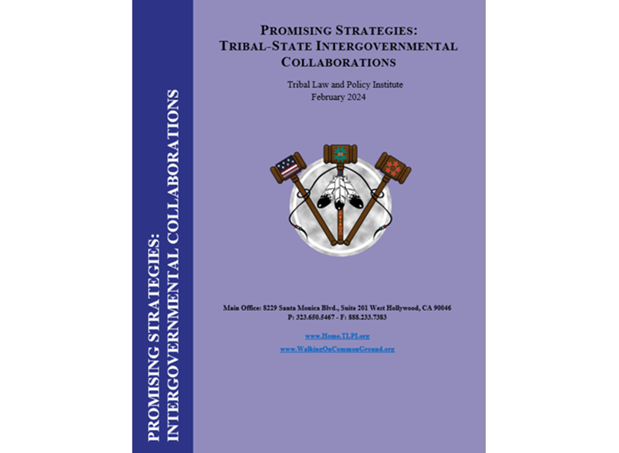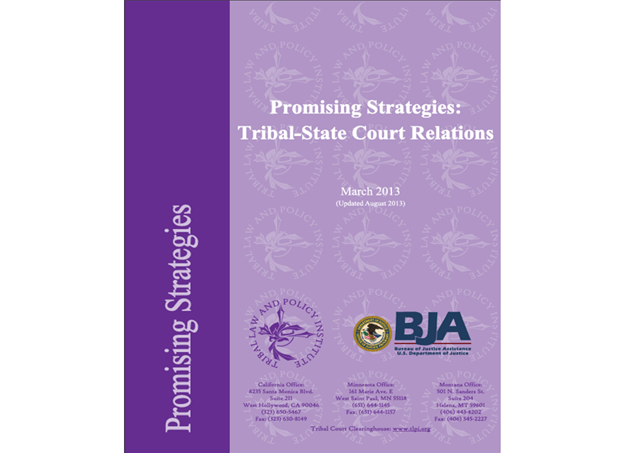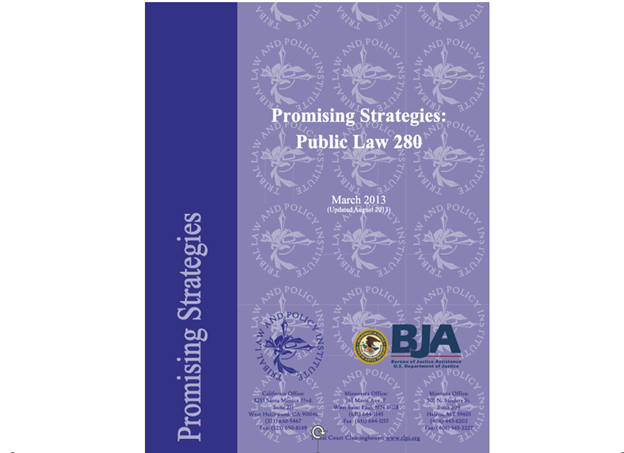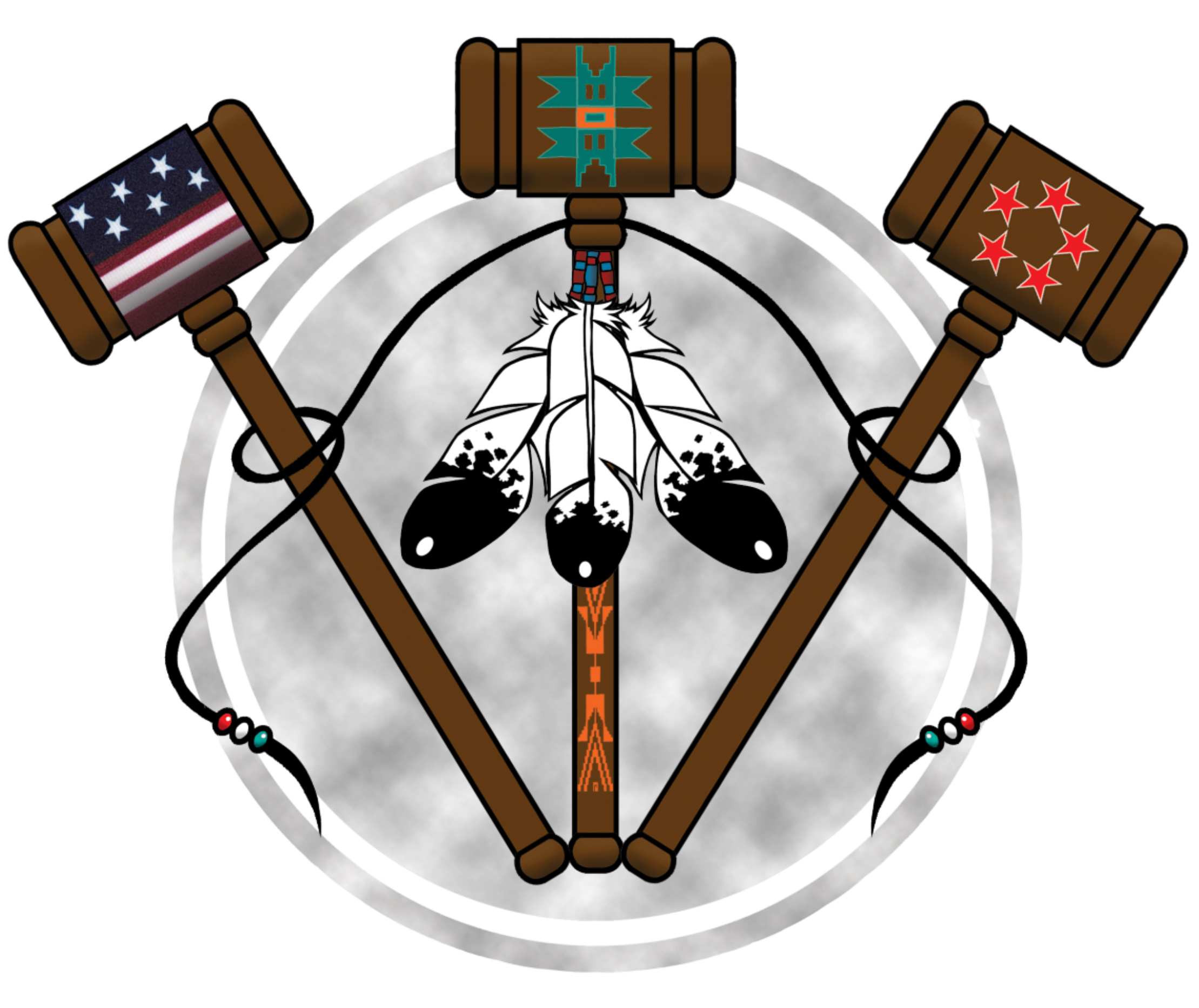Promising Strategies: Tribal State Intergovernmental Collaborations (2024)

On July 26, 2021, the Tribal Law and Policy Institute, in collaboration with the Bureau of Justice Assistance, held the “Promising Strategies in Tribal-State-Local-Federal Intergovernmental Collaboration Virtual Meeting.” The panelists highlighted intergovernmental collaborations in child welfare, bail reform, family wellness courts and community wellness courts from Alaska, California, New York, and Maine. The meeting was well attended by invited stakeholders from various disciplines, including Tribal and State courts and law enforcement. TLPI drafted a short publication based on these and other promising intergovernmental collaborations that build resiliency and provide a new way forward in the process. This publication showcases six intergovernmental collaborations with resulting variations in reimagining justice. Click here to read full document.
Promising Strategies: Tribal State Court Relations (2013)

Tribal courts and state courts interact across an array of issues, including child welfare, cross jurisdictional enforcement of domestic violence orders of protection, and civil commitments. Since the early 1990s, initiatives by judges’ organizations within both judicial systems have focused on an agenda of greater mutual understanding and cooperative action. This publication spotlights some of the most successful strategies within these initiatives. Click here to read full document.
Promising Strategies: Public Law 280 (2013)

In PL 280 jurisdictions, the concurrent jurisdiction of state and tribal courts over criminal prosecutions and civil actions arising in Indian Country creates many interactions and complications. Tribal and state authorities encounter one another across an array of issues, including government-to-government recognition, concurrent jurisdiction, cross-jurisdictional enforcement of domestic violence orders of protection, cross-deputization, and civil commitments. Tensions and misunderstandings have been common features of tribal and state policing relations in the past, sometimes erupting in jurisdictional conflicts. This publication highlights unique ways in which tribal and state jurisdictions have entered into collaborations to overcome barriers to effective justice provision. Click here to read full document.
Tribal Access to Justice Innovation – www.TribalJustice.org
Tribal Access to Justice Innovation seeks to help tribal justice practitioners learn about emerging and promising justice-related programs in Indian Country. This project was launched at the request of tribal justice practitioners around the country, who report that they often have difficulty finding practical information about how other tribes are addressing common challenges. Learn what other tribes are doing to address crime, protect victims, and improve public health and safety in their communities. The website features detailed profiles of dozens of tribal justice programs, downloadable program documents, recorded interviews, videos, a discussion forum, and more. Tribal Access to Justice Innovation is a project of the National American Indian Court Judge’s Association (NAICJA). It was originally a implemented by of the Center for Court Innovation’s Tribal Justice Exchange. It is the hope that this website will enhance the ability of tribal justice practitioners to learn from each other and develop effective solutions to today’s complex challenges.
